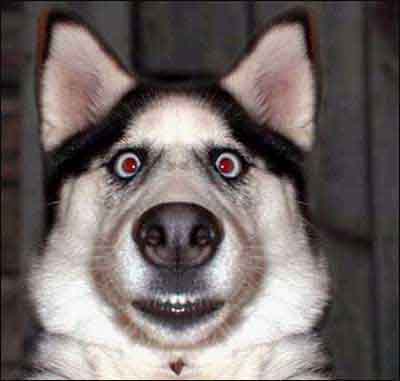Yesterday, a local story in a county newspaper in Texas carried the headline, “Salmonella can come from pets.”
The story reported, 
“Three cases of salmonella among children in Lubbock County since December 2008 are likely the result of exposure to reptiles, said Judy Davis, a spokeswoman for the city of Lubbock health department.”
The spokeswoman explained that handwashing is the key to preventing salmonella associated with reptiles and amphibians, such as snakes and turtles.
I just wanted to point out that, although less of a problem, handwashing is also important for preventing salmonella infections from furry pets.
 In 1999, the CDC received reports from three state health departments of outbreaks of multidrug-resistant Salmonella serotype Typhimurium infections in employees and clients of small animal veterinary clinics and an animal shelter.
In 1999, the CDC received reports from three state health departments of outbreaks of multidrug-resistant Salmonella serotype Typhimurium infections in employees and clients of small animal veterinary clinics and an animal shelter.
The CDC’s report stated,
“Salmonella infections usually are acquired by eating contaminated food [including produce and peanut butter]; however, direct contact with infected animals, including dogs and cats, also can result in exposure and infection.”
Doug and Phebus, at the end of the lengthy video (from September 2008) below, also recommend washing your hands after handling food and treats for your pets… especially when they’ve been recalled.

 I am now 6 ½ months pregnant and still somewhat peacefully coexisting with our four pets. But pregnancy has meant giving special attention to handwashing and avoiding cross-contamination.
I am now 6 ½ months pregnant and still somewhat peacefully coexisting with our four pets. But pregnancy has meant giving special attention to handwashing and avoiding cross-contamination.
 However, it is probably not going to affect the residents, since they
However, it is probably not going to affect the residents, since they .jpg) My ex mother-in-law once told me that if I had a baby I would have to get rid of my cats. I replied, “No cats, no baby.” My step-brother’s cats mysteriously disappeared once his firstborn was old enough to crawl. Doug and I have two cats and two dogs and no intention of giving them up or sending them outdoors once the baby arrives. Sure, there’s dog hair all over the floors and it’s going to be a hassle learning to manage new and old responsibilities – and much more difficult to keep pet hair out of the baby’s mouth once she’s mobile. But we committed to the pets long ago and have been working on teaching them their order in the home.
My ex mother-in-law once told me that if I had a baby I would have to get rid of my cats. I replied, “No cats, no baby.” My step-brother’s cats mysteriously disappeared once his firstborn was old enough to crawl. Doug and I have two cats and two dogs and no intention of giving them up or sending them outdoors once the baby arrives. Sure, there’s dog hair all over the floors and it’s going to be a hassle learning to manage new and old responsibilities – and much more difficult to keep pet hair out of the baby’s mouth once she’s mobile. But we committed to the pets long ago and have been working on teaching them their order in the home. 
 Dane Cook recently
Dane Cook recently .jpg) On Tuesday, the building manager took the stand and told the court that the actor is a serial offender, despite the signs in the gardens warning against animals pooping on the lawn. He also said he noticed "recurring small black poop being left behind in the backyard." The manager is alleged to have video footage of Cook’s pooch committing the offense.
On Tuesday, the building manager took the stand and told the court that the actor is a serial offender, despite the signs in the gardens warning against animals pooping on the lawn. He also said he noticed "recurring small black poop being left behind in the backyard." The manager is alleged to have video footage of Cook’s pooch committing the offense. “Pick up your dogs’ droppings.”
“Pick up your dogs’ droppings.” .jpg)
.jpg) Pet poop is a problem, but what’s the solution? Many cities have laws concerning scooping poo. Most states will issue a ticket ranging from $25 to
Pet poop is a problem, but what’s the solution? Many cities have laws concerning scooping poo. Most states will issue a ticket ranging from $25 to
.jpg) Ben and I had arrived in Manhattan (Kansas) a couple of days earlier, and our first official function was to serve as the entertainment at a meeting of the Canadian Studies club at Kansas State University. They wanted to see what real hosers were like, and Ben and I wanted free sandwiches, so it worked out well.
Ben and I had arrived in Manhattan (Kansas) a couple of days earlier, and our first official function was to serve as the entertainment at a meeting of the Canadian Studies club at Kansas State University. They wanted to see what real hosers were like, and Ben and I wanted free sandwiches, so it worked out well. 
 One gentleman had found out how quickly selected beverages run through the body. He had made his way to the fence to relieve himself (since using a toilet would be way to civilized) and decided to place his uneaten hot dog in his mouth in order to free up his hands for other uses. After the job was done, he found it perfectly normal to take the hot dog back out of his mouth and continue eating his dinner
One gentleman had found out how quickly selected beverages run through the body. He had made his way to the fence to relieve himself (since using a toilet would be way to civilized) and decided to place his uneaten hot dog in his mouth in order to free up his hands for other uses. After the job was done, he found it perfectly normal to take the hot dog back out of his mouth and continue eating his dinner